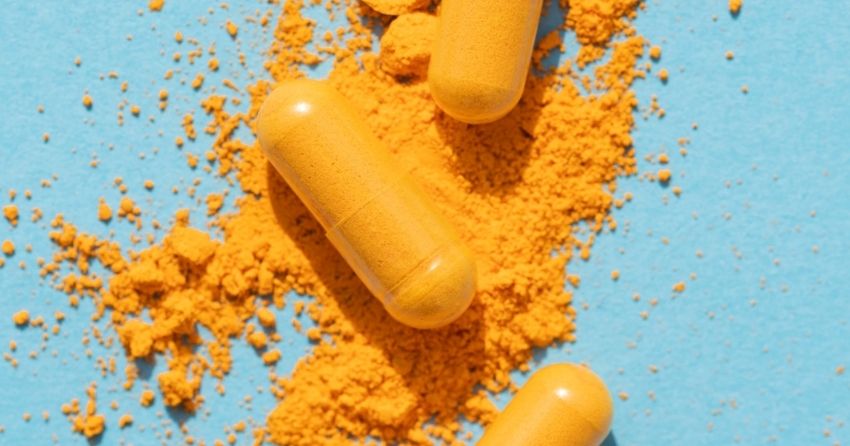Turmeric Curries Favor in the Brain By Reducing Oxidative Stress Pathways

Although you may know it best as the spice that adds a bright and sunny hue to curries and Indian cuisine, turmeric has been used therapeutically for millennia. But the container of yellow-orange powder in your spice rack does more than just stain your cutting board and impart earthy aromatic flavors. Turmeric and its active compounds called curcuminoids have also been well-studied for their role in supporting health and longevity.
One area of the body that turmeric is thought to benefit is the brain — a region highly susceptible to the damaging effects of inflammation and oxidative stress. Caused by an imbalance between the generation and elimination of harmful molecules called reactive oxygen species (ROS), oxidative stress is a known contributor to age-related cognitive impairments.
Although many studies have shown that turmeric regulates oxidative stress, researchers aren’t entirely clear on how the golden spice acts on ROS in the brain — specifically, how it affects certain cells involved with virtually all pathological and dysfunctional processes in the brain. Now, a recent study published in Molecules by researchers out of the University of Freiburg in Germany uncovers some of the pathways involved in turmeric’s neuroprotective abilities, which could prove key for supporting the aged or diseased brain.

The Double-Edged Swords of Microglia and Nitric Oxide
Central nervous system (CNS) cells are particularly susceptible to oxidative stress because of their high metabolic demands. Although the metabolism of food into energy within the cells’ mitochondria is vital for life, this process results in ROS production — with more ROS in areas with more required energy, like the brain cells known as microglia.
Microglia are the CNS’s most prominent immune cells. When something goes wrong in the brain, microglial cells are the first to respond, jumping to protect the brain by repairing tissue and undergoing phagocytosis — the clearing of damaged or dysfunctional neurons. While this is beneficial to the brain in acute amounts, excessive overactivation of microglial cells’ immune responses has potentially harmful outcomes for the CNS.
A chronic elevation of microglial activity promotes the release of pro-inflammatory signaling molecules called cytokines, which disrupt regular CNS activity and are linked to neural and cognitive disorders. Therefore, increasing our knowledge of the pathways and mediators involved with microglial activation may lead to new therapeutic options for supporting aging or damaged brains — which is what Streyczek and colleagues aimed to do in this study with turmeric.
Another double-edged sword in the brain is nitric oxide (NO). While this gaseous molecule is naturally produced in the body and is essential for widening blood vessels to increase blood flow, NO’s behavior can also switch from helpful to harmful when reacting with ROS compounds in the brain. In a healthy brain, antioxidants can effectively neutralize and eliminate excess ROS and free radicals. However, excessive release and accumulation of NO due to inadequate antioxidant activity in the aging or damaged brain can lead to additional neuronal damage.
The enzyme family primarily responsible for NO production inside cells is nitric oxide synthase, with iNOS (inducible nitric oxide synthase) being the predominant form found in microglial cells. Therefore, regulating iNOS synthesis and activity may play a critical role in reducing oxidative stress in the brain and maintaining central nervous system health.
Turmeric Extract and Curcumin Benefit Brain Best
In this study, the Germany-based research team assessed the effects of turmeric on cultures of microglial cells that act as a model of neuroinflammation. They studied four forms of the spice — turmeric extract and three of its constituents: curcumin, tetrahydrocurcumin, and curcumenol.
The researchers stimulated the microglial cells to become overactivated, which induced excessive NO release. Streyczek and colleagues then added different concentrations of the four turmeric-based treatments, finding that turmeric extract was the most effective at inhibiting NO release, with dose-dependent effects — meaning, the greater concentration of turmeric used, the greater the results. Curcumin was a close second, inhibiting NO release at levels similar to the middle concentration of turmeric extract. Tetrahydrocurcumin slightly reduced NO production, but curcumenol had no significant effect.
These results were not unexpected, as research has shown curcumin to be the most bioactive and prominent component found in turmeric. However, the fact that turmeric extract produced more potent effects than curcumin alone suggests that the synergy between the dozens of curcuminoids found in turmeric could be working together in a yet-to-be-known way.
Next, Streyczek and colleagues studied how turmeric extract affected iNOS protein synthesis. Similar to the previous results, all concentrations of turmeric extract effectively reduced excessive iNOS protein synthesis and genetic activity of iNOS in microglial cells in a dose-dependent manner. With lower iNOS activity, reduced NO production and release would follow, likely leading to lower levels of oxidative stress and inflammation in the brain overall.

Say No to Excess NO
Overall, these results suggest that turmeric is a potent inhibitor of nitric oxide in microglial cells of the CNS, which could prove beneficial for preventing oxidative stress in the brain and the associated cognitive disorders that arise from that damage.
As the authors reflect in their paper, “In conclusion, the importance of NO as a modulator of oxidative stress and neuroinflammation, both contributing to [cognitive] degeneration, has grown immensely. Understanding the physiology and pathology of NO and the role of turmeric in the reduction of NO-levels, as well as the underlying pathways, might be key to treating [cognitive] diseases.” Looking forward, future research should evaluate the potential of curcumin or other curcuminoids using other neuronal cells, as well as in animals and humans, to further elucidate the role turmeric plays in reducing oxidative stress and supporting brain health.
References:
Förstermann U, Sessa WC. Nitric oxide synthases: regulation and function. Eur Heart J. 2012;33(7):829-837d. doi:10.1093/eurheartj/ehr304
Streyczek J, Apweiler M, Sun L, Fiebich BL. Turmeric Extract (Curcuma longa) Mediates Anti-Oxidative Effects by Reduction of Nitric Oxide, iNOS Protein-, and mRNA-Synthesis in BV2 Microglial Cells. Molecules. 2022;27(3):784. Published 2022 Jan 25. doi:10.3390/molecules27030784





